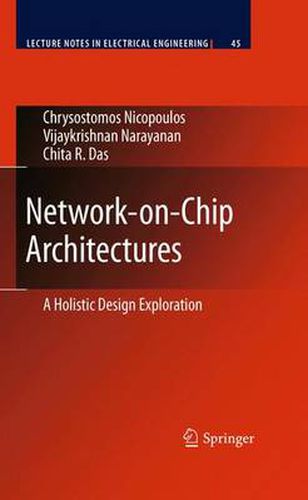Readings Newsletter
Become a Readings Member to make your shopping experience even easier.
Sign in or sign up for free!
You’re not far away from qualifying for FREE standard shipping within Australia
You’ve qualified for FREE standard shipping within Australia
The cart is loading…






This title is printed to order. This book may have been self-published. If so, we cannot guarantee the quality of the content. In the main most books will have gone through the editing process however some may not. We therefore suggest that you be aware of this before ordering this book. If in doubt check either the author or publisher’s details as we are unable to accept any returns unless they are faulty. Please contact us if you have any questions.
[2]. The Cell Processor from Sony, Toshiba and IBM (STI) [3], and the Sun UltraSPARC T1 (formerly codenamed Niagara) [4] signal the growing popularity of such systems. Furthermore, Intel’s very recently announced 80-core TeraFLOP chip [5] exemplifies the irreversible march toward many-core systems with tens or even hundreds of processing elements. 1.2 The Dawn of the Communication-Centric Revolution The multi-core thrust has ushered the gradual displacement of the computati- centric design model by a more communication-centric approach [6]. The large, sophisticated monolithic modules are giving way to several smaller, simpler p- cessing elements working in tandem. This trend has led to a surge in the popularity of multi-core systems, which typically manifest themselves in two distinct incarnations: heterogeneous Multi-Processor Systems-on-Chip (MPSoC) and homogeneous Chip Multi-Processors (CMP). The SoC philosophy revolves around the technique of Platform-Based Design (PBD) [7], which advocates the reuse of Intellectual Property (IP) cores in flexible design templates that can be customized accordingly to satisfy the demands of particular implementations. The appeal of such a modular approach lies in the substantially reduced Time-To- Market (TTM) incubation period, which is a direct outcome of lower circuit complexity and reduced design effort. The whole system can now be viewed as a diverse collection of pre-existing IP components integrated on a single die.
$9.00 standard shipping within Australia
FREE standard shipping within Australia for orders over $100.00
Express & International shipping calculated at checkout
This title is printed to order. This book may have been self-published. If so, we cannot guarantee the quality of the content. In the main most books will have gone through the editing process however some may not. We therefore suggest that you be aware of this before ordering this book. If in doubt check either the author or publisher’s details as we are unable to accept any returns unless they are faulty. Please contact us if you have any questions.
[2]. The Cell Processor from Sony, Toshiba and IBM (STI) [3], and the Sun UltraSPARC T1 (formerly codenamed Niagara) [4] signal the growing popularity of such systems. Furthermore, Intel’s very recently announced 80-core TeraFLOP chip [5] exemplifies the irreversible march toward many-core systems with tens or even hundreds of processing elements. 1.2 The Dawn of the Communication-Centric Revolution The multi-core thrust has ushered the gradual displacement of the computati- centric design model by a more communication-centric approach [6]. The large, sophisticated monolithic modules are giving way to several smaller, simpler p- cessing elements working in tandem. This trend has led to a surge in the popularity of multi-core systems, which typically manifest themselves in two distinct incarnations: heterogeneous Multi-Processor Systems-on-Chip (MPSoC) and homogeneous Chip Multi-Processors (CMP). The SoC philosophy revolves around the technique of Platform-Based Design (PBD) [7], which advocates the reuse of Intellectual Property (IP) cores in flexible design templates that can be customized accordingly to satisfy the demands of particular implementations. The appeal of such a modular approach lies in the substantially reduced Time-To- Market (TTM) incubation period, which is a direct outcome of lower circuit complexity and reduced design effort. The whole system can now be viewed as a diverse collection of pre-existing IP components integrated on a single die.